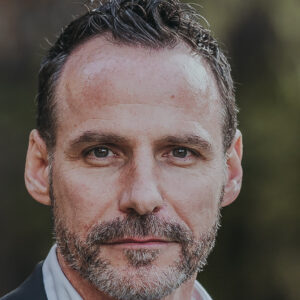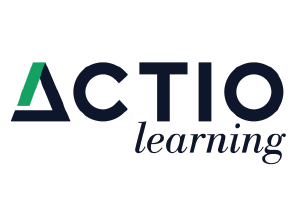The only constant is change.
I remember this being a maxim 30 years ago. And, when I think back on those times, there certainly were changes in the air. The internet was still young, and businesses were just beginning to use email. At the time, I was managing customer accounts by driving all over Northern California with a foldable map on the passenger seat and, for the first time in my life, a cell phone instead of a pocketful of quarters, just in case I needed to make an emergency call.
Indeed, times were a-changin’, but as I look back and compare them to today, they do not compare with the pace of change in the 2020s. Considering the unprecedent rate of change that we all are experiencing, we need to think more about what it means for people to continually have to adapt.
Learning for Change
Traditional models of learning that focus on knowledge, skills and attitudes are simply inadequate to prepare individuals for dramatic change. A more helpful approach to the learning required during times of major change is called “transformative learning,” which is an area of extensive research that views individual, group and organizational transformations as a learning process. This is important because when we view change as a learning process, transformation is not something that just happens to us, but instead becomes something we can plan for, support and facilitate.
The outcomes of transformative learning include such things as more accurate, complex and inclusive worldviews; greater mental flexibility; greater control over emotional responses and knee-jerk reactions; more critical yet open-minded knowledge-creation processes and increased capacity for metacognitive activity. These types of learning outcomes are considered “transformative” because they dramatically affect how people understand and exist in the world on a moment-to-moment basis. And therefore, they also change a person’s behavior and performance in significant ways.
Of course, transformation is neither fast, easy nor completely controllable. When faced with the types of challenges that can prompt transformation, there are many directions a person can go. For instance, one reaction to too much complexity in the world is to retreat into one’s echo chambers and choose more simplistic ways of seeing the world, rather than engaging with difference. However, by understanding the processes that promote transformative learning, we can design learning environments that help people deal with change in ways that are conducive to positive personal, group and organizational growth.
The 5 Stages of Transformative Learning
The overall process of transformative learning can be understood as consisting of at least five types of experiences, each of which needs a different form of support.
1. Disjuncture.
To justify the mental and emotional energy necessary for deep change, there needs to be a compelling reason. It is beyond the purview of training professionals to try to upend someone’s life to provide this motivation. However, we can and should strive to recognize when people are realizing an inadequacy in their current ways of thinking, being, and acting. This means that rather than trying to transform people, our job is to recognize when they are primed for transformation and then provide support to aid them in that process.
Disjuncture needs someone to recognize what is happening and to offer help.
2. Questioning.
Once one realizes significant inadequacies in their ways of understanding the world and how it works, or our habitual ways of interacting with the world, there comes a time of deep questioning. The challenge here is that the questioning that is necessary is incredibly difficult. We need to get behind the scenes of our thinking. What are the tacit ways of making sense of the world, the unspoken, unrealized assumptions we hold — about how the world works, what we can and should do, and so forth.
One thing we can do to facilitate this questioning is to engage in critical dialogue with others who see the world fundamentally differently. Critical dialogue is not an argument. Rather, it consists of attempts by all parties to truly understand how the other is making sense of things, to work together to understand things differently, preferably from a broader, more complex perspective. This perspective does not necessarily “accommodate” the existing views of all people, but recognizes core concerns and tacit assumptions each party is holding.
This type of learning activity requires a certain degree of validation of each person’s current ways of thinking, being and acting — as an acknowledgement that those ways, even if no longer adequate, are nevertheless accomplishments of their younger self. Without this validation, there is a tendency for people to be defensive and to justify rather than to question.
Questioning requires critical dialogue and critical self-reflection in an environment that provides both validation and challenge.
3. Exploring.
It is one thing to realize that our current ways of thinking, being and acting are not adequate, but it is orders of magnitude more difficult to imagine and comprehend how things could be different. Exploring possibilities can be done by observing role models or mentors that exhibit the changes the learner is seeking to experience. This process can also include imagining, exploring ideas, brainstorming, and so forth.
Research has shown that people going through personal transformations often turn to artistic activities, which can be interpreted to mean that they are exploring different ways of knowing and giving voice to deep-seated knowledge or insights that, because they are so different from our habitual norms, need creative processes in order to gain their voice. This is a time when we need exposure to difference, in whatever forms that might take.
Exploring needs exposure to difference, creativity, and open-mindedness.
4. Navigating Liminality.
Transformation is not something we can accomplish during a weekend retreat. It is very much a lived process, where we move through iterative cycles of disjuncture, questioning, and exploring, while at the same time having to get out of bed every morning and engage with the challenges of the day. The process of daily living requires that one lives in the sometimes-uncomfortable state of liminality, where former ways of thinking, being, and acting no longer seem adequate, but new ways are not yet formed. It is a time of experimentation, of trying out new thoughts and new behaviors, but also of engaging in questioning and exploring while at the same time trying to act in the world. It is helpful when we are able to receive feedback, especially from those who have already tread a similar path of transformative development. Over time, we slowly gain greater competence and confidence in our new ways of thinking, being, and acting.
Daily Living needs patience, feedback, and the freedom and safety of trying out new things.
5. Finding Community.
A painful truth about the process of transformation is that the changes we experience can alienate us from our current social groups. This does not mean that we necessarily lose them, but that it can be difficult to engage in those communities from our new perspectives and ways of being in the world. It is therefore helpful to find new communities, where people may understand better the processes we are going through, and it is especially helpful when those groups are congruent with the ways in which we are changing.
Finding community can be facilitated by mentoring or peer support networks.
In a world of constant change, there is pressure put upon people to transform themselves in significant ways. Personal transformation is not something that can be forced and is probably not something we should strive to push others into. It is, however, a reality that many people are faced with. The alternative can be to stubbornly refuse to change or, worse, to retreat into a more simplistic mode of thinking, being and acting in the world.
However, with a little attention placed upon recognizing when people are stepping onto the path of transformation, we can design learning processes that help people develop greater capacities for complexity and flexibility and support paths for positive transformations, rather than leaving people to tread the path of change alone.







